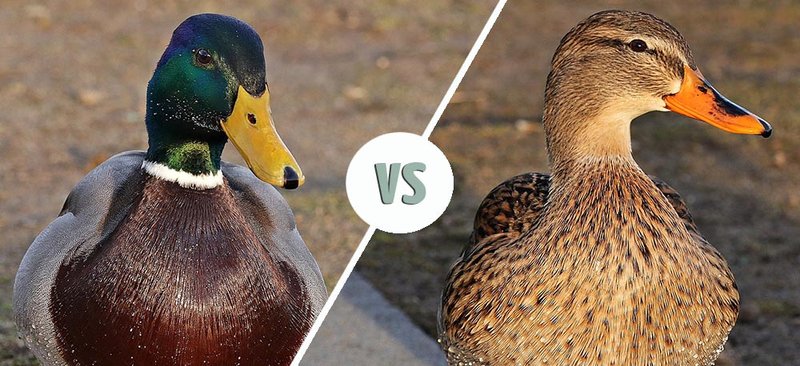
Think of it like being in a crowd of people who all wear blue shirts. At first glance, they might seem the same, but if you really look, you’ll notice each person has their unique style, whether it’s the cut of the shirt or how they wear it. Similarly, duck species may share features, but subtle differences set them apart. In this article, we’ll explore the Mallard and its similar bird species, helping you differentiate between them with ease.
What Makes the Mallard Unique?
The Mallard (Anas platyrhynchos) is often recognized by its vibrant colors, especially the males. Male Mallards have a shiny green head, a white ring around their neck, and a chestnut-brown breast. The females, on the other hand, sport mottled brown feathers with an orange bill that aids in camouflage. This ability helps them blend seamlessly into their surroundings, especially when nesting.
One fascinating aspect of Mallards is their adaptability. They thrive in a variety of habitats, from urban settings to rural wetlands. They have a distinctive quack that easily sets them apart in the bird world. If you’ve ever heard a group of ducks, chances are it was a bunch of Mallards. This adaptability and loud communication make them one of the most common ducks worldwide.
Common Lookalikes: The Black Duck
Next up is the American Black Duck (Anas rubripes). At first glance, you might compare it to a female Mallard. Both have dark brown plumage, but the Black Duck is generally a darker shade overall. Their bill also tends to be yellowish rather than orange, which can help in identifying them.
Here’s the thing: while they might share habitats, their behaviors can be quite different. Black Ducks are often more secretive than Mallards. They prefer quieter, less disturbed areas, and their quacks are softer and more subdued. You might spot them in more remote wetlands, where they can feed on plants and invertebrates without much human disturbance.
Understanding the Northern Pintail
Another similar species is the Northern Pintail (Anas acuta). This duck is known for its long, elegant neck and pointed tail feathers. Unlike the Mallard, male Pintails have a much sleeker, more streamlined appearance, displaying a chocolate-brown head and a white stripe down their neck.
Mallards and Pintails often share the same wetlands, but Pintails prefer open spaces. They have a more graceful and fluid way of swimming and typically dabble rather than dive. When nesting, Pintails often choose to do so in quite different locations than Mallards, which could be vital for birdwatchers looking to identify them in the wild.
Recognizing the Gadwall
The Gadwall (Anas strepera) is another duck that can fly under the radar for those not familiar with the subtleties of duck species. Male Gadwalls are grey with a subtle pattern of black and white and don’t have the flashy colors of Mallards or Pintails. Females, like the Mallard, are brown but can be distinguished by their more uniform coloration and lack of distinctive markings.
Gadwalls are often seen in groups, swimming peacefully and feeding primarily on seeds and aquatic plants. They are less vocal than Mallards, which can make them harder to spot if you’re only listening for sounds. If you see a less colorful, more muted group of ducks, you might just be looking at a Gadwall family!
American Wigeon: Similar Yet Different
The American Wigeon (Anas americana) can easily confuse beginner birdwatchers with its close resemblance to the Mallard. Males have a striking green patch on their heads and a white crown, alongside a somewhat rounded body. The females are more subdued but can be recognized by their distinctive shape and patterns.
Wigeons are known for their grazing behavior, often feeding in grassy areas rather than solely on water. This makes them quite different from Mallards, who focus more on foraging in the water. It’s a fascinating reminder of how different ducks can adapt their feeding strategies to thrive in varying environments.
Tips for Spotting the Differences
Now that you’re familiar with some Mallard lookalikes, how do you ensure you can tell them apart in the field? Here are a few tips to help you:
- Color and Pattern: Focus on distinctive color patterns on the heads and bodies, like the green of the Mallard or the subtle tones of the Gadwall.
- Size and Shape: Note differences in body size and shape—Pintails are longer and leaner, while Mallards are more compact.
- Behavior: Observe how they feed. If they’re grazing on land, you might be seeing Wigeons or Gadwalls, while Mallards typically dabble in water.
Birdwatching is all about patience and practice, so don’t be discouraged if it takes a bit to get the hang of it!
Why It Matters: Understanding Duck Diversity
Understanding these differences is more than just an interesting hobby; it plays a crucial role in wildlife conservation. Each duck species has its unique role in the ecosystem, and knowing them helps raise awareness about habitat preservation. The Mallard, for instance, often thrives in urban areas, while others may be on the brink of decline due to habitat loss.
Recognizing and appreciating the diversity among ducks also enhances our overall enjoyment of nature. Whether you’re out in the wild or simply enjoying a local park, you’re bound to have a deeper connection to your surroundings when you understand the species you’re observing.
In conclusion, being able to differentiate the Mallard from its similar species enriches your birdwatching experience and empowers you to contribute to conversation around bird life and habitat preservation. So next time you’re out, keep an eye out for those subtle differences and enjoy the vibrant world of ducks!
